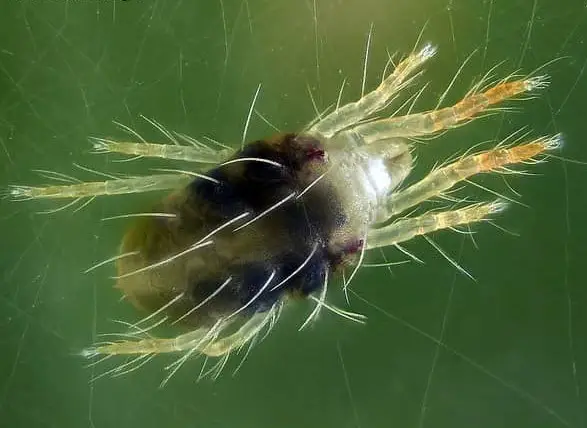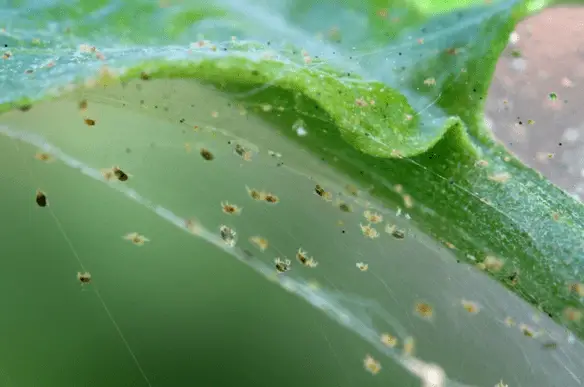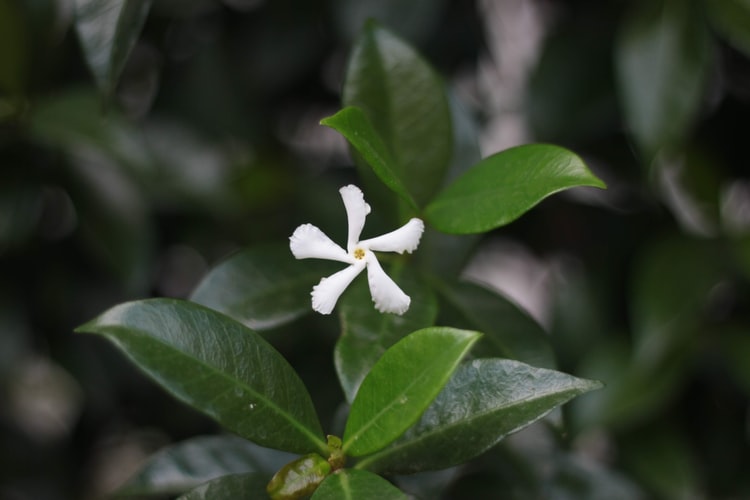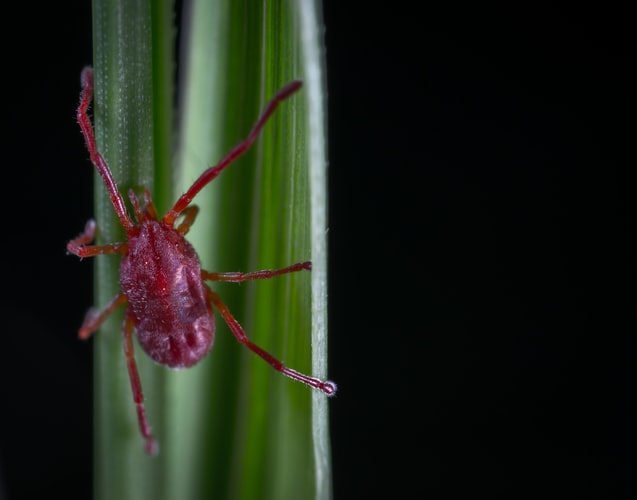I grow a lot of roses in my garden, and one of the biggest issues anyone growing roses or flowers can face each year is aphids. Sometimes when I get busy with life, I forget to do my precautious steps to protect my lovely babies.
Aphids are abundant, small, and difficult to remove. They reproduce rapidly, and before you know it, they take over all of your plants.
In order to identify and get rid of aphids, you need to know what are they, what causes them, and how to treat and prevent them from ever happening again.
In this article, I will introduce to you everything you need to learn about aphids.
Table of Content
- What Are Aphids
- How to Identify Aphids
- What Causes Aphids
- How to Remove & Prevent Aphids Naturally
- Conclusion
What Are Aphids
Have you looked at your plant and wondered what are those green tiny little insects? Most definitely they can be aphids. Now, aphids come in different colors green, black, red, yellow, brown, or even gray. However, the most common color is green.
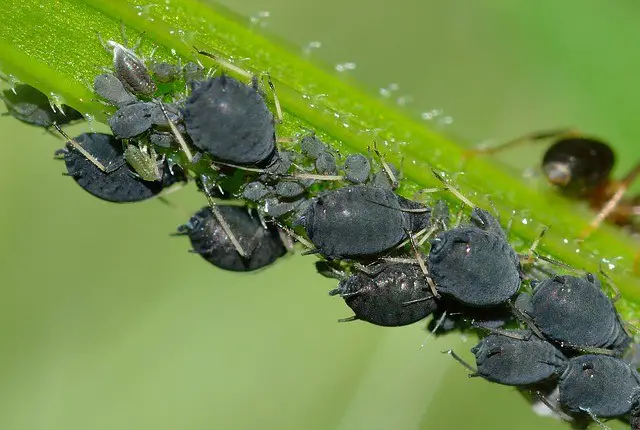
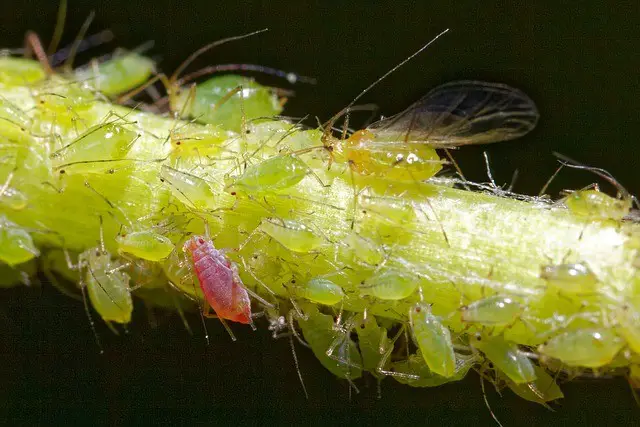
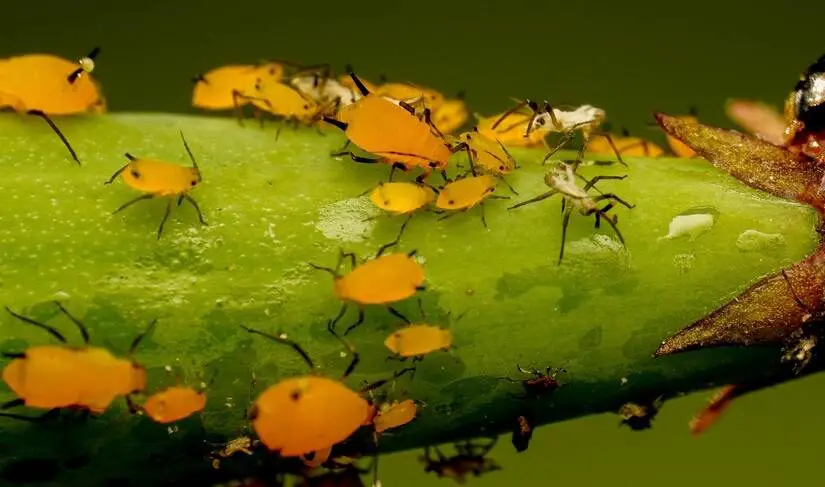
Aphids grow on plant sprouts, buds, and even petals. They suck the plant’s nutrients and disrupt its growth. Additionally, they can carry various diseases and viruses which damage your plant. In severe infestation situations, the plant unfortunately dies.
The transmission of the virus occurs when the aphids suck on a plant infected with a certain virus, the virus attaches to the microscopic mouth needle of the aphids, and therefore, those aphids become infected with the same virus as well. Later on, when they move to a different plant and suck on its juices, they transfer the virus.
The most commonly transmitted viruses by aphids are cucumber mosaic virus and turnip mosaic virus.
How To Identify Aphids
Their size ranges from 1/16 to 1/8 inch long (2-4 mm). They are relatively small and really hard to spot. To identify them, you can notice curling, misshaped, yellow leaves. Though that is noticed when the infestation grew a bit larger.
In the early stages, you need to check under the leaves to find them. The way you will be able to identify if they are aphids and not some other insects is you’ll notice some shed white skin. You will also be able to notice a sticky secretion on the leaves.
Related article: Spider Mites on Plants and Trees
What Causes Aphids
1. Nitrogen Fertilizer
Too much nitrogen fertilizer can cause aphid infestation. If you feed your plant with a fertilizer that is rich in nitrogen, you might want to stop that because too much nitrogen will create large amounts of amino acids in the leaves. Amino acids attract aphids.
Another cause of aphids is when your plant does not get enough air. All plants should be kept in a well-ventilated area with sun exposure.
2. Ants
Ants are attracted to the sweet secretion aphids produce.
I know what you’re thinking, ants seem harmless, but in fact, they are very risky to keep around plants for many reasons, two of them are: they protect aphids from their insect enemies and are able to transmit and spread aphids to other plants.
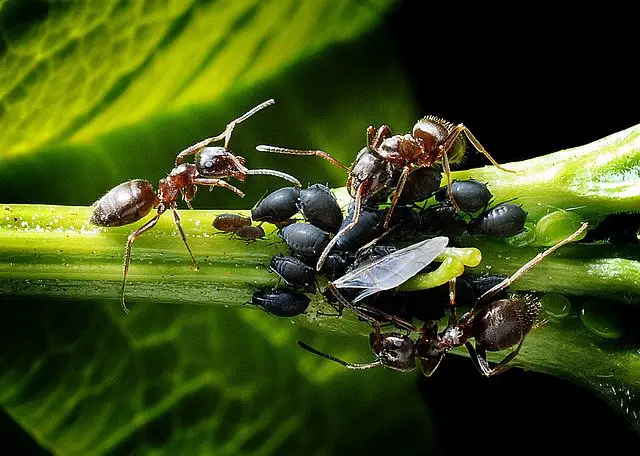
Credit: JerzyGorecki
3. Aphid Ecology
As previously mentioned, there are different varieties of aphids. Each variety has its own ecological system. A type of aphid has wings (Pterygota), meaning they are able to fly, and therefore, they can move from one plant to another rapidly.
The wingless aphids on the other hand are females who reproduce without fertilization. They grow only in late spring to early fall without mating. Towards the end of the fall, both females and males start to lay eggs. So we can conclude that during winter and early spring, the aphids found are wingless. Keep in mind that these aphids become full adults within 10 days and lay about 5 eggs per day.
That information should keep us alert all the time. Especially during summer when the winged aphids take over our beloved plants and destroy them.
Related article: How to Treat Spider Mite From Indoor and Outdoor Plants
How To Remove & Prevent Aphids Naturally
1. Manual Method
I know! aphids are a pain, once we see them, we want to get rid of them at once using a pesticide. But next time, let’s try to remove them by ourselves without the need for chemicals.
There are a few very simple methods to eliminate aphids from your plants. It is safe to remove them one by one using your hands during the early stages of the infestation.
A Tape
A tape can be of use to remove the aphids from your plant. Use a tape of low quality so it doesn’t cause the leaves to tear or break the branches. Pull the tape gently to not harm the crop as well.
A Toothbrush
First, prepare a container where you can throw the aphids onto and then scrape them all off with a gentle toothbrush. When you brush off the aphids, make sure to do it gently as well as you can damage your plant by scratching it.
Do not use this method on small and weak plants, or vulnerable areas such as the buds and newly grown leaves.
2. The Natural Enemies Method
Ladybugs
Ladybugs are aphids’ enemies. These bugs are capable of preying on more than 15 aphids each. So, during the early stages of aphid infestation, ladybugs could really be of use and can stop the aphids from spreading.
It doesn’t necessarily mean you need a large number of ladybugs around, only one can do the job well; that is during the early stage.
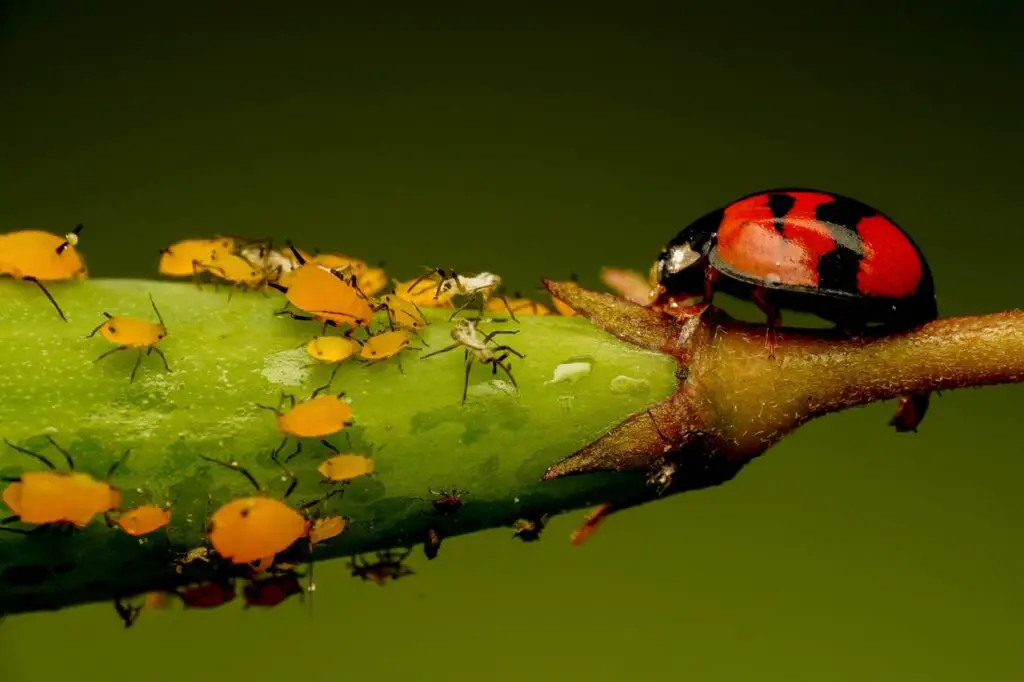
Credit: Henry Lai
3. Suffocation Method
Milk
Milk is very powerful when it comes to taking care of plants. It helps with many problems such as powdery mildew and aphids.
In order for the milk method to work, spray it directly on the infestation area. Here, it is optional if you want to dilute it with water or leave it as it is, both work fine.
Aphids cannot breathe when sprayed with milk, they would suffocate and die. Additionally, when the milk dries on them, they would forcibly shrink and die. After 3 or 4 hours, rinse your plant thoroughly with clean water because if the milk sits too long on the plant, it will start to react and probably harm your plant.
However, I must note that this method might not be effective if the infestation took over your plants in large amounts as it can work only during the early stages. But, consistency can be key here, if you keep spraying your plant daily, that might be effective and work for you.
Soapy Water
In a spray bottle mix 5 teaspoons of liquid dish soap with one quart of water. Give it a good stir until they are both well mixed. Then, you guessed it, spray directly on the entire plant while targeting the areas where the aphids are mostly gathered.
4. Repellent Method
The following methods are used to repel and prevent aphids from interacting with your plant.
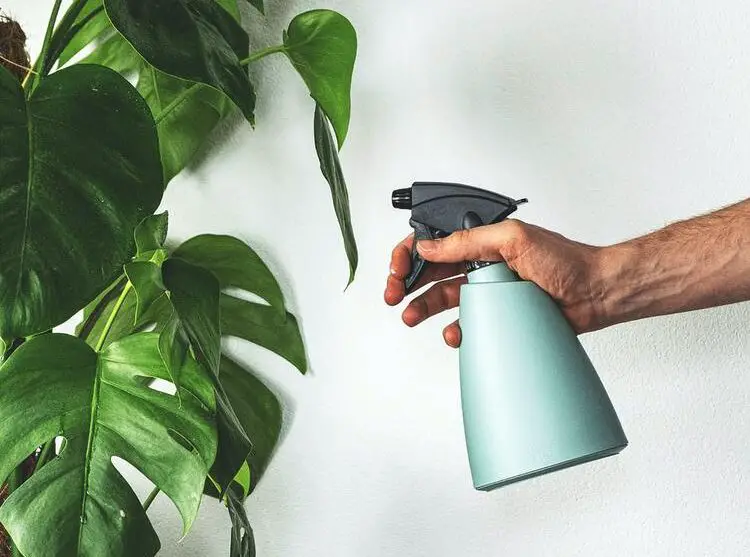
Wood Vinegar
Wood vinegar can be used as a repellent for aphids. Not only that, but it also disinfects the soil and helps with the plant’s growth.
In fact, wood vinegar is very useful to use on all kinds of plants and especially for crops. In a spray bottle, put some wood vinegar and dilute it with water. We add water because concentrated wood vinegar can be harmful to plants. Spray the whole garden on a regular basis as it has great protection and growth effects.
Neem Oil
For many years, neem oil has been used as a natural repellent for insects and pests. This method used is similar to the previous one, wood vinegar. In a spray bottle, dilute neem oil with water and spray it on the plant directly.
As I mentioned early in this article, I grow roses a lot, and since pests love roses, I have to deal with pest issues all the time. Neem oil is almost my always go-to when it comes to preventing and protecting my beautiful babies. In addition to that, it is also beneficial to soil and plant growth. I’d recommend using it along with wood vinegar as they work great together.
I wrote an article about Neem Tree Benefits- Why You Should Start Planting Neem Trees, if you’d like, you can check it out and learn more about Neem oil benefits.
Rice Vinegar
The Rice vinegar method can take a while to actually work. You need to prepare it a month earlier to be able to use it. First, you need to soak 5 chili peppers and 1 glove of garlic in 500ml rice vinegar for at least 30 days (preferably more).
Second, when your solution is ready to be used, dilute it with water and spray directly on the aphids. Aphids cannot stand the smell of vinegar, chili, and garlic.
Rice vinegar is also known to prevent molds and remove the pests’ secretion from the leaves and buds.
Conclusion
It is our duty to keep our plants healthy and beautiful. Using precautious methods to protect your plants is as necessary as watering and feeding them. In this article, I mentioned different natural methods to remove and prevent aphids from your plant. Of course, you can use insecticides, but nothing tops natural methods in my opinion. Fight nature with nature!
Read next: Orchids Pests & Insects – Identify, Treat, & Prevent

